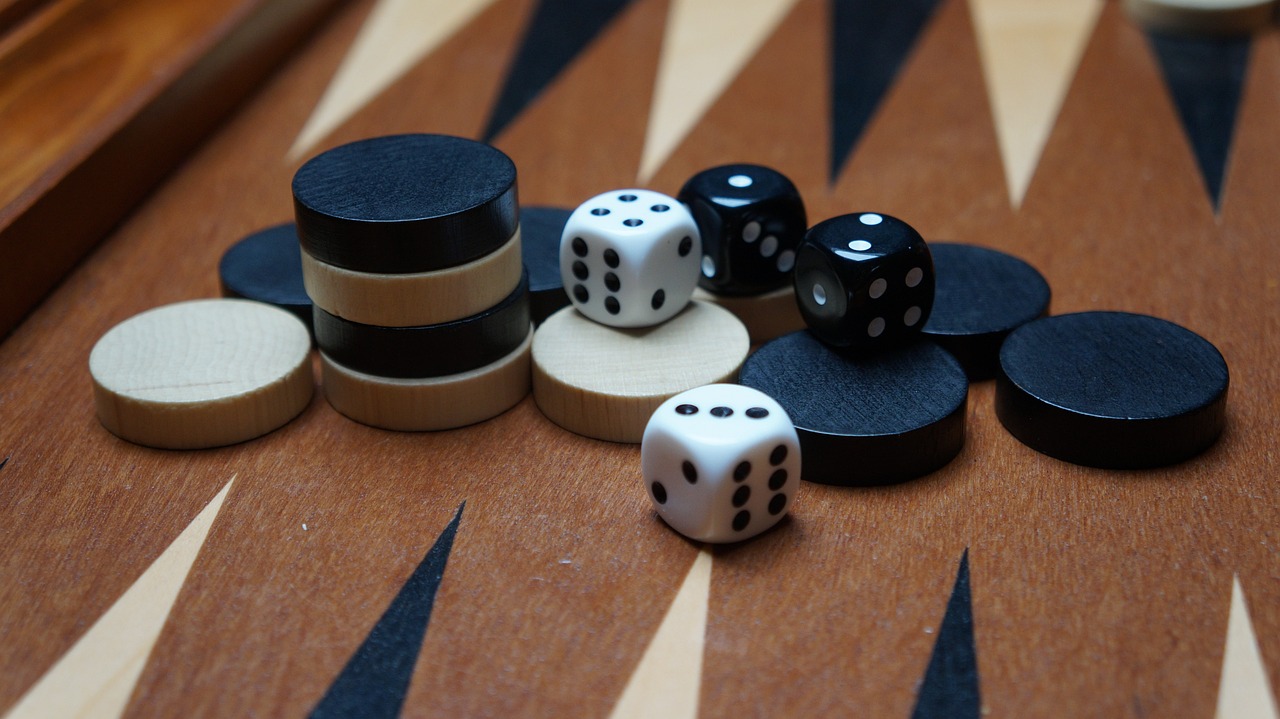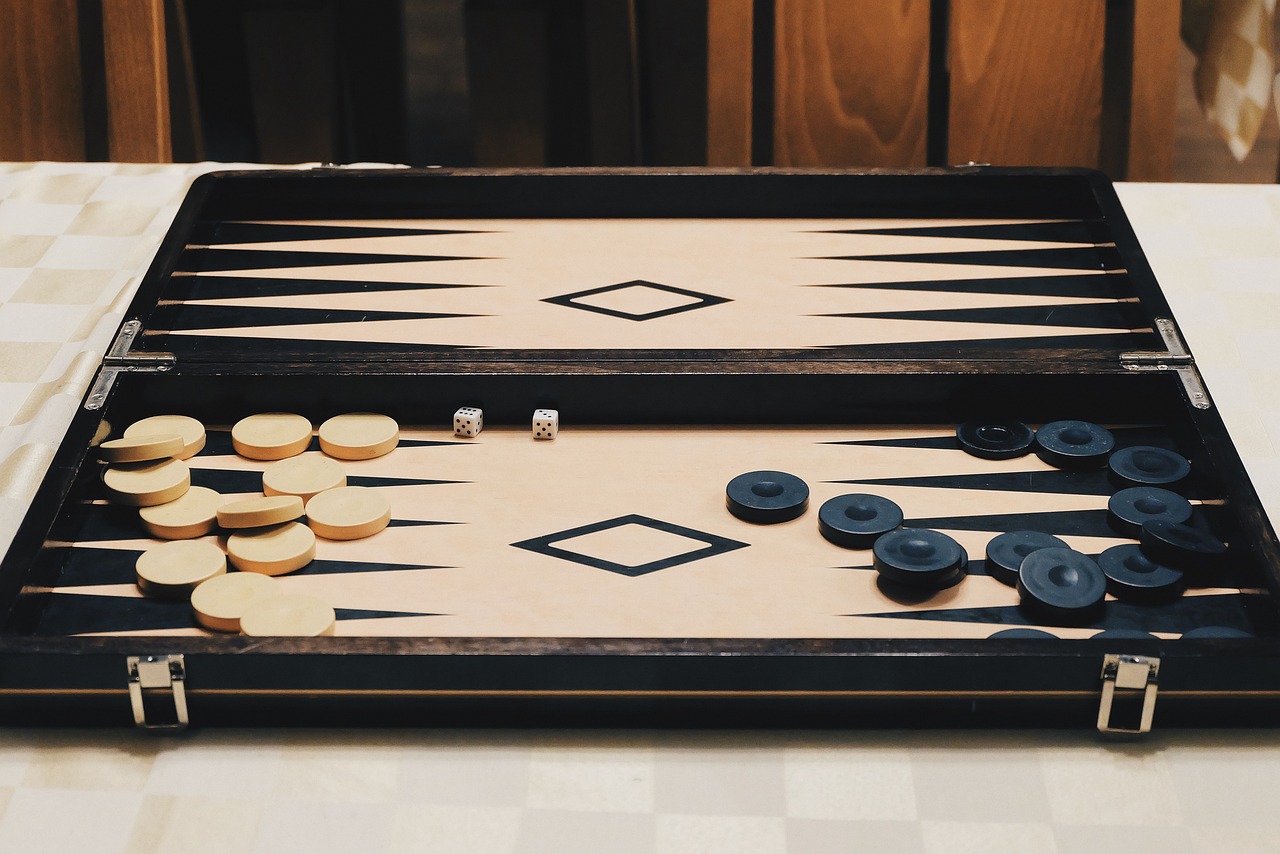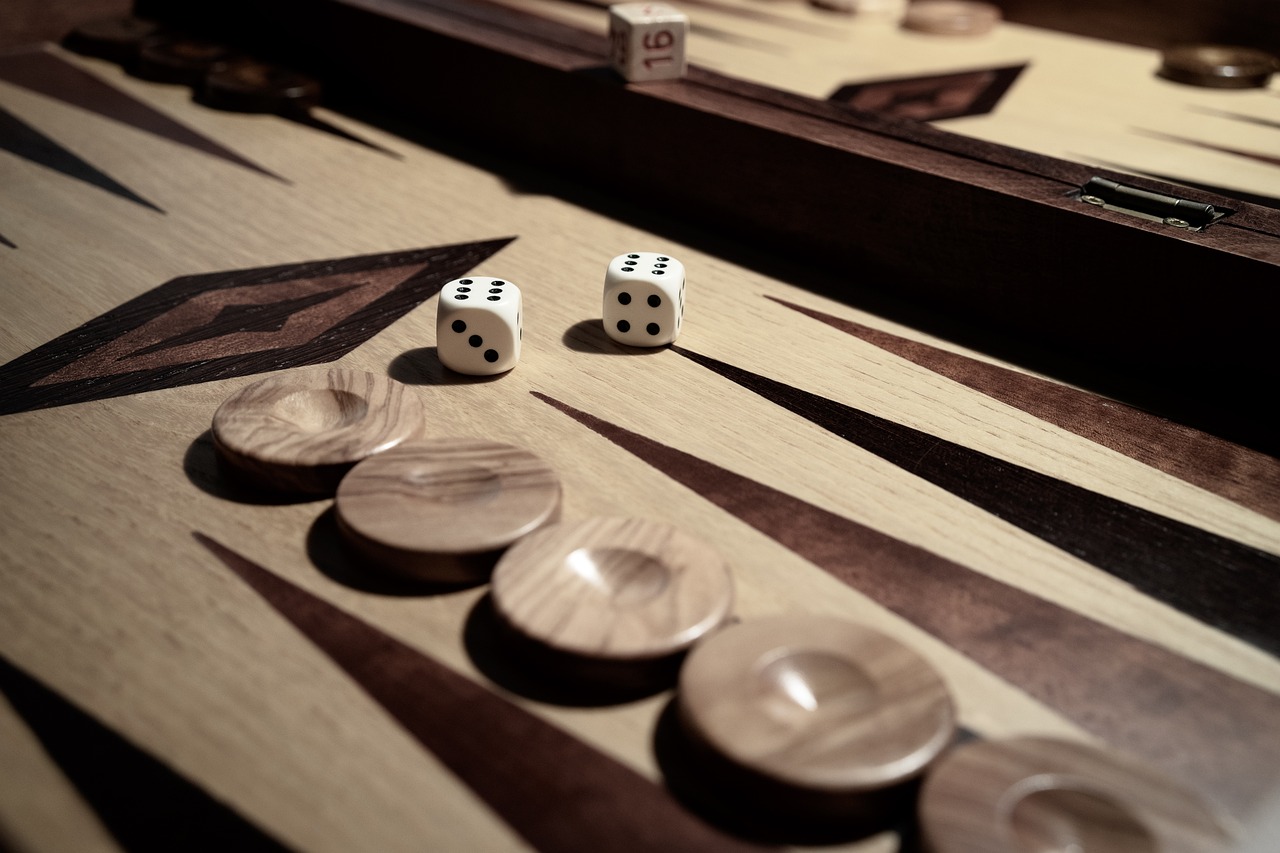This is another post for beginner players of backgammon. Here we’ll be having a look at how checkers make their way around the board, which is an essential piece of knowledge you’ll need if you ever want to play. Click on the following link for more information about backgammon rules.
Starting a Game of Backgammon
Once the board has been set up, a game of backgammon will start with each player rolling a single die. These dice rolls should ideally be done using a dice cup; these are specifically designed to avoid any manipulation of the die. This initial roll is very important, as it determines which player will go first, in addition to the specific numbers in play. Should the players manage to roll the same number, the roll will be repeated until they roll two differing numbers.
The winner of the roll will not be rolling the die again, but will instead move their checkers according to the value of the dice. For instance, if player one rolls a 6, and player two rolls a 3, then player one will move using 6-3. After the first roll, the players will then roll two dice each and continue to take turns in doing so.
Roll of the Dice
The value of the dice is used to determine how many points (pips) the player can move their checkers. Regardless of the roll, checkers are always moved forward to a lower-numbered point.
Rules for Moving
The following rules determine the kinds of movement that are allowed in a game:
Open Points
Firstly, a checker can only be moved to an open point, which is a point that is not occupied by two or more of the opponent’s checkers. Should a point be occupied by only a single opposing checker, it is a blot and is also considered an open point. Should an opposing checker land on such a blot, the latter will be considered a “hit” and placed on the bar. You can freely land as many checkers as you wish on one already occupied by your own checker, as there is no limit.
Two Dice
Each die’s value represents its own move – for instance, if a player rolls a 4 and a 2, they can move one checker four spaces to an open point, and another checker two spaces to an open point. They can also choose to combine the values and move a single checker six places, but this is only possible if they could have performed each move anyway (meaning that there was an open space for both 2 and 4).
Doubles
Should a player be lucky enough to roll doubles, they will be able to play their moves twice. If, for instance, a player rolled 4-4, they would be able to move their checkers a total of 16 times! They can choose to distribute these movements how they like, subject to the rules above.
Legal Moves
A player must use both values of a roll as long as it is compatible with the rules outlined previously. Should a player roll a double, they should play all four numbers. Should a player only be able to roll a single number, they must use the playable one and move the other. In a situation where either number can be played, but not both, the highest value should be played. If a player cannot play either of their numbers, they will forfeit their turn. Should a player get a double, they must play as many of the numbers as possible, subject to the rules above.
Bearing Off
Once a player has managed to successfully manoeuvre all of their checkers onto their home board, they can start bearing off. When a player bears off, they roll numbers corresponding to points on the board where their checkers reside and subsequently remove them from play. For instance, rolling a 5 would allow the player to bear off a checker from the five-point.
If there is no corresponding checker to the number that has been rolled, the player must use the roll to make a move with a checker on a high-numbered point. Should there be no such checkers in play, the player must bear off a checker from the highest point occupied by one. Players don’t have to bear off a checker if they can otherwise perform a legal move.
In order to bear off, a player must have all of their active checkers on their home board. Should they have one of their checkers hit off during the bearing-off process, it will be sent to the bar. The player must then re-enter the checker and bring it all the way back to the home board, before being able to bear off again. Whoever manages to bear off all 15 of their checkers will be the winner of the game.







